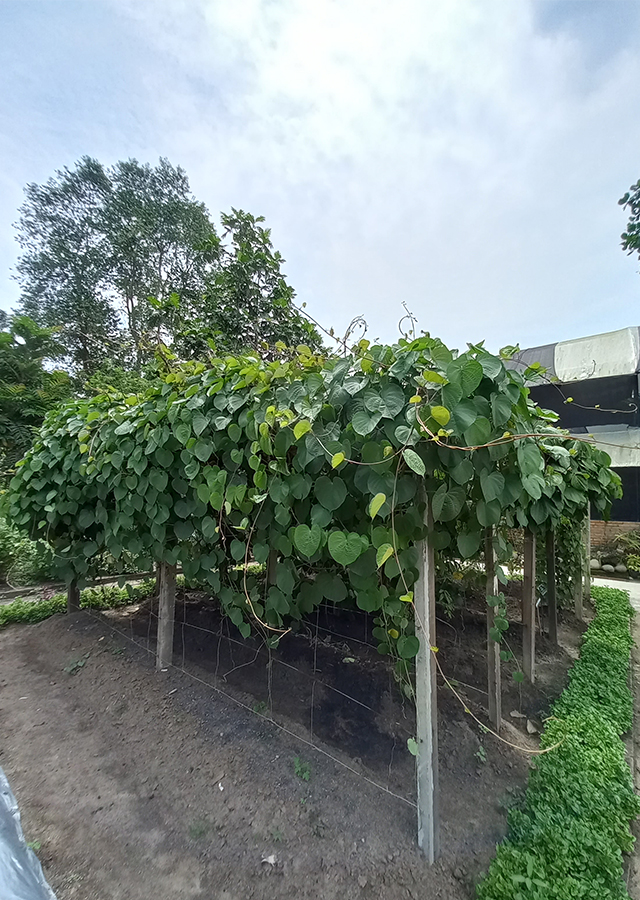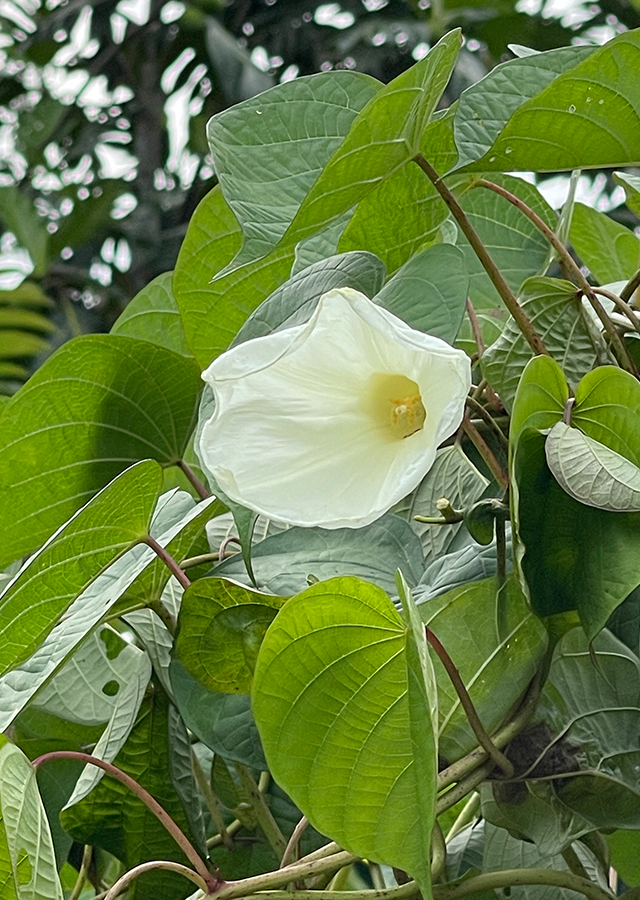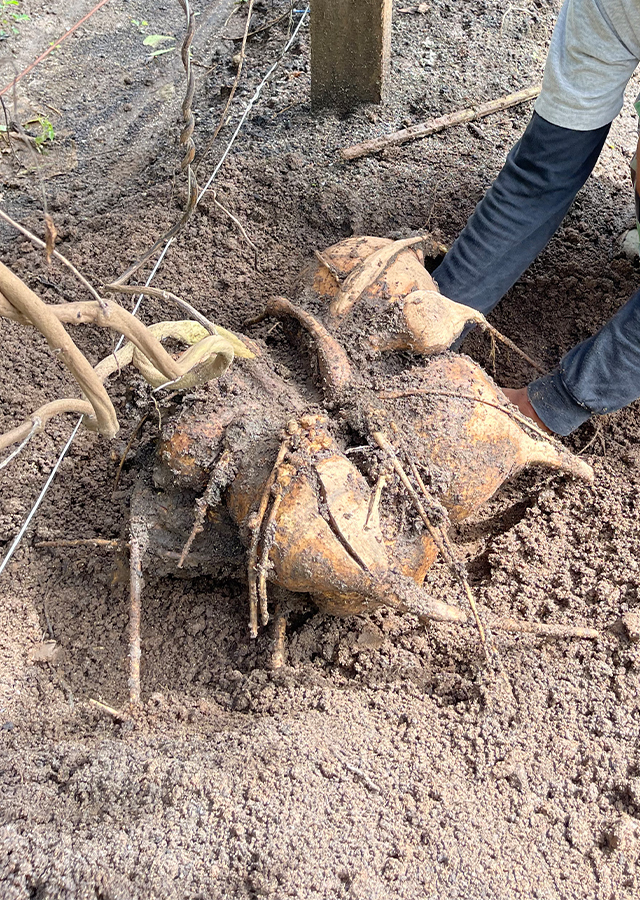Decalobanthus mammosus
Decalobanthus mammosus (Lour.) A.R.Simões & Staples
Convolvulaceae
Location in our garden
Vegetable



Synonym
Convolvulus mammosus Lour.
Ipomoea mammosa (Lour.) Choisy
Merremia mammosa (Lour.) Hallier f.
Habitus
Climbers. Perennial, glabrous twining plant, producing herbaceous stems 3 - 6 m long
Part Used
Roots
Tuber
Growing Requirements
Full Sunshine
Habitat
Forest
Overview
Decalobanthus mammosus is a plant from the Convolvulaceae family which is not native to Indonesia, but is native to India, Andaman Island, and Indo-China. In Indonesia, this plant is cultivated on the islands of Java, Bali, Maluku, and Madura as a medicinal plant and a food source (the tuber). This species is one of the rare species and is included in the rare criteria based on the Indonesia Biodiversity Strategy and Action Plan issued by the National Development Planning Agency (2003). In Indonesia and Malaysia, this species is widely used as a medicinal plant which is empirically efficacious to treat various diseases. It is also a herbal ingredient that is widely sold as herbal medicine and is used in small traditional medicine industries. In addition, the plant has also been used by the community as a source of fiber, where the stems can produce very fine and strong fibers, with a satin sheen, which can be made into cloth.
Vernacular Names
No data found on this. Need further research.
Agroecology
A plant of the lowland tropics, found at elevations below 500 m.
Morphology
- Rhizomes - gathered in the ground, like sweet potatoes. The color of the tuber skin is yellow-brown, the skin is thick with white gummy, when dry it becomes brown.
- Stems - small, a bit slippery when held and the color is a bit dark.
- Leaves - single, long-stemmed, heart-shaped, flat leaf edge, pointed tip, 5-12 cm long, 4-15 cm wide, dark green color.
- Flowers - has a bell-shaped shape, white, 7-8 cm long with 4 petals. Umbrella-shaped inflorescences gather 1-4 flowers.
Cultivation
Propagated by seeds and stem cuttings.
Chemical Constituents
Oxidase (sap), flavonoids, quinones, phenolic compounds, triterpenoids and steroids.
Traditional Medicinal Uses
- The sap of the fresh tubers is widely drunk in the treatment of affections of the throat and respiratory organs, dysentery and fever.
- The sap is applied externally to treat snakebite, burns, fevers, dysentery, poisoning, chest and throat affections and oedema.
Part Used
Reference Sources
- Royal Botanic Gardens, Kew. Plants of the World Online. Decalobanthus mammosus (Lour.) A.R.Simões & Staples. 16-09-22.
- Cancer Chemoprevention Research Center (CCRC). 2008. Bidara Upas (Merremia mammosa). https://ccrc.farmasi.ugm.ac.id/?page_id=126.16-09-22.
- Herbal Medicine. 2014. Diabetes mellitus use Merremia mammosa. https://www.herbs-medicine.com/2016/01/17-benefits-merremia-mammosa-for-health.html. 16-09-22.
- Sadiyah E. R., Yuliawati K. M., Aniq L. Phytochemical Study of Bidara Upas (Merremia mammosa (Lour.) Hallier f.) Leaf. Proceeding of “The International Conference on Herbal Medicine Industrialization as Complementary Therapy in Natural Disasters.

